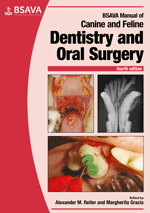
Full text loading...

Dental and oral surgical procedures present the clinician with unique challenges in terms of anaesthetic techniques and skills. This chapter provides information on the anaesthetic techniques and skills required in dental and oral surgical treatment, as well as management of perioperative pain.
Anaesthetic and analgesic considerations in dentistry and oral surgery, Page 1 of 1
< Previous page | Next page > /docserver/preview/fulltext/10.22233/9781905319602/9781905319602.6-1.gif

Full text loading...














